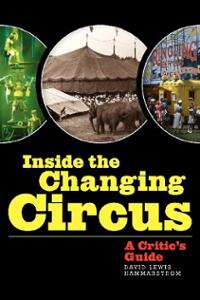David Lewis Hammarstrom has a lifetime’s worth of personal and professional experience of circus at his disposal, and has added to his extensive knowledge with archival material and personal letters to offer both a historical rendering of the circus form, and a critic’s guide.
The author’s voice rings loud and clear, and he is unapologetic about his sometimes un-PC opinions. As well as a chaptered check-list of elements to consider when critically engaging with circus performance, Hammarstrom also includes a range of his own critical opinions. One of his particular bug-bears is the invasion of economically driven elements into a circus experience that should put artistry first at all times. He takes pains at points to remind the reader that circus critique is, by its nature, subjective, and we must remind ourselves that his authorial voice is based upon his own opinions when it comes to performance presentation.
Hammarstrom’s exuberance with language reflects the colourful extravagance of the circus shows he loves; although his passion sometimes runs away with him at the expense of sentence structure and the central portions of his chapters tend towards anecdotal ramble – and often seem to be compiled from previous material, rather than composed specifically for this book. The author acknowledges his inclination towards the circuses of his youth, favouring animal acts and dare-devilry over aerial dance, and technique over conceptual artistry. Additionally, Hammarstrom is offering a breadth of knowledge to the world that is hard to come by elsewhere.
The book is firmly routed in its North American base, citing most modern innovations as stemming from the Cirque Du Soleil behemoth, ignoring their European forerunners and international counterparts. Offerings from the Southern Hemisphere are dismissed with one unfavoured performance from Circus Oz; however China and the former Soviet region are more generously represented, owing to the author’s wider first hand experiences of each.
Despite its flaws, this book seems to be the only one of its kind – approaching a critical appreciation of circus – since A Seat at the Circus. It is also well indexed with many historical names, even if the bibliography is rather limited.
 Hammarstrom, David Lewis Inside the Changing Circus: a critic’s guide (Duncan, Oklahoma: BearManor Media, 2012) ISBN 978-1-59393-679-2
Hammarstrom, David Lewis Inside the Changing Circus: a critic’s guide (Duncan, Oklahoma: BearManor Media, 2012) ISBN 978-1-59393-679-2



[…] circus owner Franz Renz with his three trained elephants. I feel I have to agree with critic David Lewis Hammarstrom in his opinion that the animals in their own majestic right are a powerful show, and that tricks […]